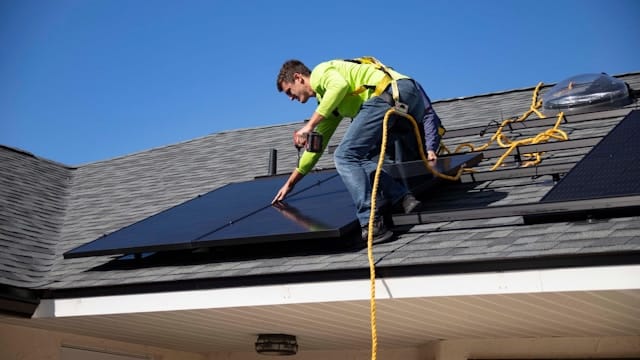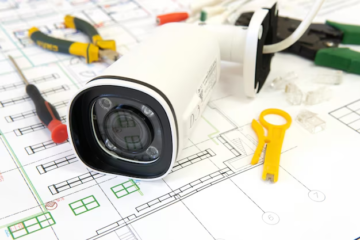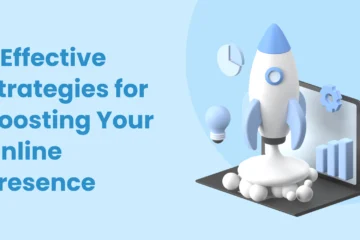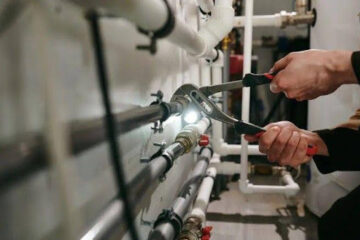Solar power stands out as a beacon of innovation and environmental responsibility as the world shifts toward sustainable energy alternatives. 2025 promises to offer even more advancements in solar technology; hence, it is an ideal time to consider switching to solar energy. Using solar energy has great advantages, whether your company wants to improve your corporate social responsibility or you are a homeowner trying to cut your energy costs. This guide will guide you through the primary steps and considerations for going solar in 2025, therefore equipping you with the information required to make sound decisions that align with your energy goals.
Understanding Solar Technology: An Overview of Systems by
A solar energy system is mostly composed of a solar panel, which gathers sunlight and generates power. Solar panels are typically composed of photovoltaic (PV) cells, which, when exposed to sunlight, produce direct current (DC). An inverter turns this power into alternating current (AC) energy, which you can utilize in your house or business. Other technologies are starting to surface outside conventional solar panels. For home installations, for example, solar shingles provide a visually appealing choice that easily blends with conventional roofing materials. Using mirrors to concentrate sunlight into a small area, concentrated solar power (CSP) devices create high-temperature heat that can subsequently generate electricity. Determining which system best meets your demands and consumption pattern depends on an awareness of these technologies.
Financial Incentives and Considerations for Solar Adoption
Adopting solar energy in 2025 offers various financial benefits that might greatly lower initial expenditures. Federal solar investment tax credits (ITC), among other government incentives, allow you to deduct a part of the cost of your solar installation from your federal taxes. Rebates and incentives provided by several states and municipal governments can further enhance savings. Furthermore, financing options with flexible payment structures, like solar loans, leases, and power purchase agreements (PPAs), make solar energy more affordable for businesses and homeowners. Examining the return on investment (ROI) is also vital; many solar systems could pay for themselves in a few years with power bill savings, given energy costs keep rising. This financial environment helps one make wise financial decisions as well as a sustainable one by switching to solar energy.
Choosing the Right Solar Provider
Choosing a reliable solar provider is crucial for the solar adoption process. With numerous solar companies in the market, conducting extensive research will ensure a successful installation. For instance, if you are looking for solar companies in Illinois, start with evaluating the company’s history, standing, and feedback from customers. Search for certificates including the North American Board of Certified Energy Practitioners (NABCEP), which indicates a dedication to industry standards and best practices. Comparing several quotes and proposals can help one understand the guarantees, installation schedules, and services provided. Furthermore, inquire about the after-sales support and maintenance policies of the firm, as the lifetime and performance of your solar system depend on ongoing support. Establishing a partnership with a trustworthy solar supplier will help you streamline the installation procedure and improve your whole experience with solar energy.
Installation Process: What to Expect
Once a solar supplier has been selected, knowledge about the installation procedure will assist in setting expectations. First, a site assessment will be carried out to determine the solar potential of your property. The best system size and design will be found by means of analyses of elements like roof orientation, shade from buildings or trees, and structural integrity. Following this examination, local authorities’ permissions and approvals will be obtained, which may vary according to the region. Usually lasting one to three days, the actual installation procedure installs solar panels, inverters, and other components. A final inspection will be carried out after installation to guarantee everything satisfies local building regulations and safety criteria. Once authorized, the system will be connected to the grid, so you may start to enjoy solar energy. Familiarizing yourself with the process can help alleviate concerns and make the transition to solar easier.
Maintenance and Long-Term Performance
Maintaining a solar energy system is relatively simple, but it is critical for ensuring peak performance. Usually requiring little maintenance, solar panels are designed to resist different weather conditions. The efficiency of the panels can be increased by routinely cleaning them to get rid of dust, debris, and dirt. A yearly check is advised, with a focus on the inverter and electrical components, to guarantee everything functions correctly. Pick an installer who is partnered with a solar power dealer, because they will have access to modern technology that allows for easier management of your solar panels systems. A 20–25 year warranty is typically included with solar panels, indicating their long-term performance and durability. Tracking system performance and quickly addressing any problems by means of internet platforms or applications helps you monitor energy generation. Over its lifespan, a solar energy system can offer both financial and environmental advantages as well as dependable power for decades with proper maintenance.
Conclusion
Transitioning to solar energy by 2025 is more than just a trend; it is a significant step towards sustainable living. Understanding the technology involved, assessing financial incentives, choosing the appropriate supplier, negotiating the installation process, and committing maintenance can help you make informed decisions resulting in a successful solar adoption. Adopting solar energy is a proactive decision for the future as environmental conscience and energy independence become increasingly vital.




